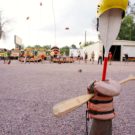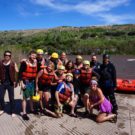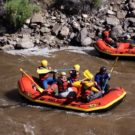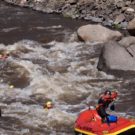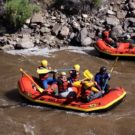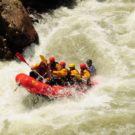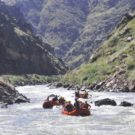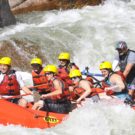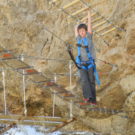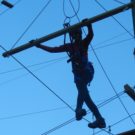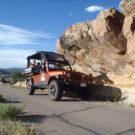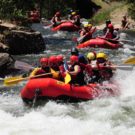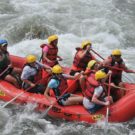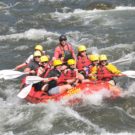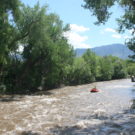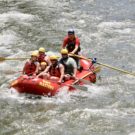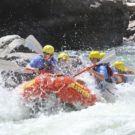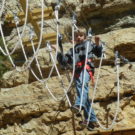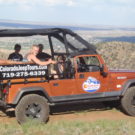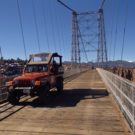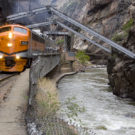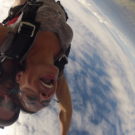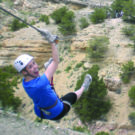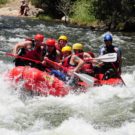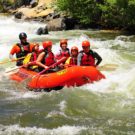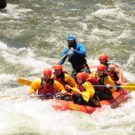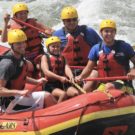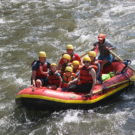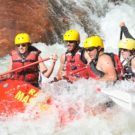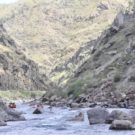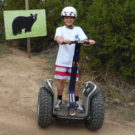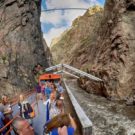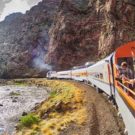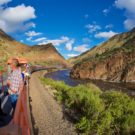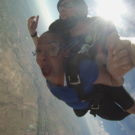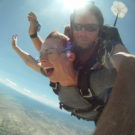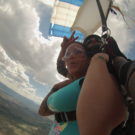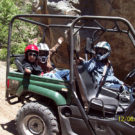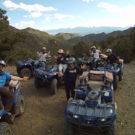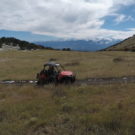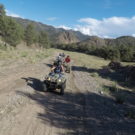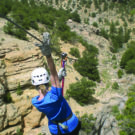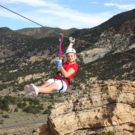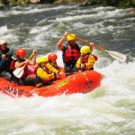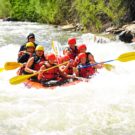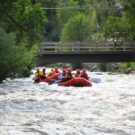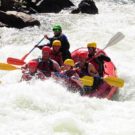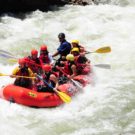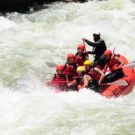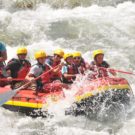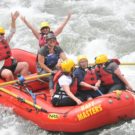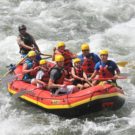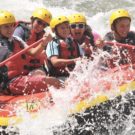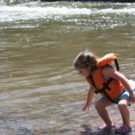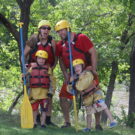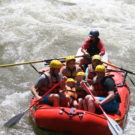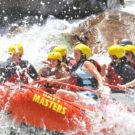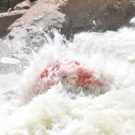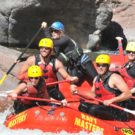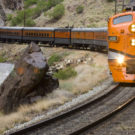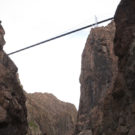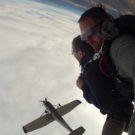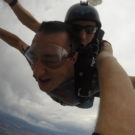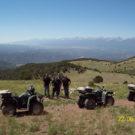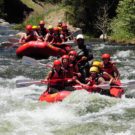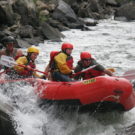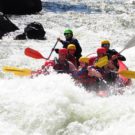Rafting Rapids Classifications
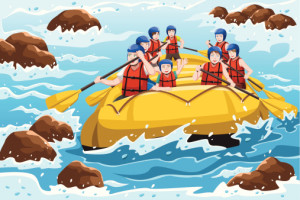 The American Whitewater Association assigns rapids classifications based on river difficulty levels as a guideline for whitewater rafting comparison. Weather conditions and changes in the environment can change the level of difficulty for a waterway during seasonal times of year. For best information, consult a local river guide as to the rapids classifications and difficulty rating for the river when you expect to make a run.
The American Whitewater Association assigns rapids classifications based on river difficulty levels as a guideline for whitewater rafting comparison. Weather conditions and changes in the environment can change the level of difficulty for a waterway during seasonal times of year. For best information, consult a local river guide as to the rapids classifications and difficulty rating for the river when you expect to make a run.
Whitewater enthusiasts should act cautiously the first time a new run is attempted. River difficulty changes with fluctuations in water level, flooding, downed trees and other unexpected problems. Increased difficulty adds danger to paddlers as well as increased challenge. There is a wide range of difficulty from a short part of a Class IV section to an entire Class IV river length. Cold water conditions and remote locations add danger to any river run. Know the rapids classifications and what your skill level is before going on a rafting trip.
Description of Rapids Classifications
Class I Rapids
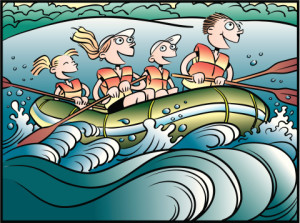 Class I rapids have fast moving water with riffles and small waves. They contain few obstructions, all obvious and missed with little training. The risk to swimmers is slight and self-rescue is easy.
Class I rapids have fast moving water with riffles and small waves. They contain few obstructions, all obvious and missed with little training. The risk to swimmers is slight and self-rescue is easy.
Class II Rapids: Novice
Class II rapids are considered novice level with straightforward rapids that have wide, clear channels evident without scouting. While occasional maneuvering may be required, rocks and medium-sized waves are easily missed by trained rafters. Swimmers are rarely injured and group assistance is rarely needed. The upper end of this difficulty level is designated “Class II+.”
Class III: Intermediate
Class III rapids have moderate, irregular waves which may be difficult to avoid and can swamp an open canoe. Complex maneuvers in fast currents and good boat control in tight passages or around ledges are often required. Large waves or strainers may be present but can be easily avoided. Strong eddies and powerful current effects can be found, particularly on larger-volume rivers. Advanced scouting is advisable for inexperienced parties. While injuries while swimming are rare, self-rescue is usually easy but group assistance may be required to avoid long swims. Further qualifications of rapids in this category are delineated with “Class III-” or “Class III+.”
Class IV: Advanced
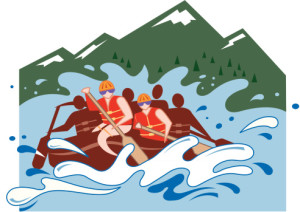 Class IV rapids are intense and powerful but predictable rapids requiring precise boat handling in turbulent water. Depending on the character of the river, it may feature large, unavoidable waves and holes or constricted passages demanding fast maneuvers under pressure. A fast, reliable eddy turn may be needed to initiate maneuvers, scout rapids, or rest. Rapids may require “must” moves above dangerous hazards. Advanced scouting may be necessary the first time a river is attempted. Potential risk of injury to swimmers is moderate to high, and water conditions may make self-rescue difficult. Group assistance for rescue is often essential but requires practiced skills. A strong Eskimo roll skill for kayakers is highly recommended. Rapids that are at the lower or upper end of this difficulty range are designated “Class IV-” or “Class IV+” respectively to further designate difficulty level.
Class IV rapids are intense and powerful but predictable rapids requiring precise boat handling in turbulent water. Depending on the character of the river, it may feature large, unavoidable waves and holes or constricted passages demanding fast maneuvers under pressure. A fast, reliable eddy turn may be needed to initiate maneuvers, scout rapids, or rest. Rapids may require “must” moves above dangerous hazards. Advanced scouting may be necessary the first time a river is attempted. Potential risk of injury to swimmers is moderate to high, and water conditions may make self-rescue difficult. Group assistance for rescue is often essential but requires practiced skills. A strong Eskimo roll skill for kayakers is highly recommended. Rapids that are at the lower or upper end of this difficulty range are designated “Class IV-” or “Class IV+” respectively to further designate difficulty level.
Class V: Expert
Rivers in the Class V group contain extremely long, obstructed, or very violent rapids which expose a paddler to added risk. Drops may contain large, unavoidable waves and holes or steep, congested chutes with complex, demanding routes. Rapids may continue for long distances between pools, demanding a high level of fitness. If eddies exist they may be small, turbulent, or difficult to reach. At the high end of the scale, several of these factors may be combined. Advanced scouting is recommended but may be difficult to accomplish. Swims are dangerous, and rescue is often difficult even for experts. A very reliable Eskimo roll skill, proper equipment, extensive experience, and practiced rescue skills are essential to attempt rapids in this classification.
Class VI: Extreme and Exploratory Rapids
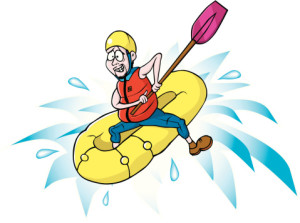 If a river is classified as Class VI it is extremely dangerous. These runs have almost never been attempted and often exemplify the extremes of difficulty, unpredictability and danger. The consequences of errors are very severe and rescue may be impossible. Only teams of rapids’ experts should attempt these rapids at favorable water levels, after close personal inspection and taking all precautions. Once a Class VI rapids has been run many times, its rating may be changed to an appropriate Class 5.x rating. Because of the large range of difficulty that exists, Class 5 is an open-ended, multiple-level scale designated by class 5.x. Each of these levels is an order of magnitude more difficult than the last. Example: increasing difficulty from Class V to Class 5.1 is a similar order of magnitude increase in difficulty as increasing from Class IV to Class V.
If a river is classified as Class VI it is extremely dangerous. These runs have almost never been attempted and often exemplify the extremes of difficulty, unpredictability and danger. The consequences of errors are very severe and rescue may be impossible. Only teams of rapids’ experts should attempt these rapids at favorable water levels, after close personal inspection and taking all precautions. Once a Class VI rapids has been run many times, its rating may be changed to an appropriate Class 5.x rating. Because of the large range of difficulty that exists, Class 5 is an open-ended, multiple-level scale designated by class 5.x. Each of these levels is an order of magnitude more difficult than the last. Example: increasing difficulty from Class V to Class 5.1 is a similar order of magnitude increase in difficulty as increasing from Class IV to Class V.
Source: www.americanwhitewater.org


